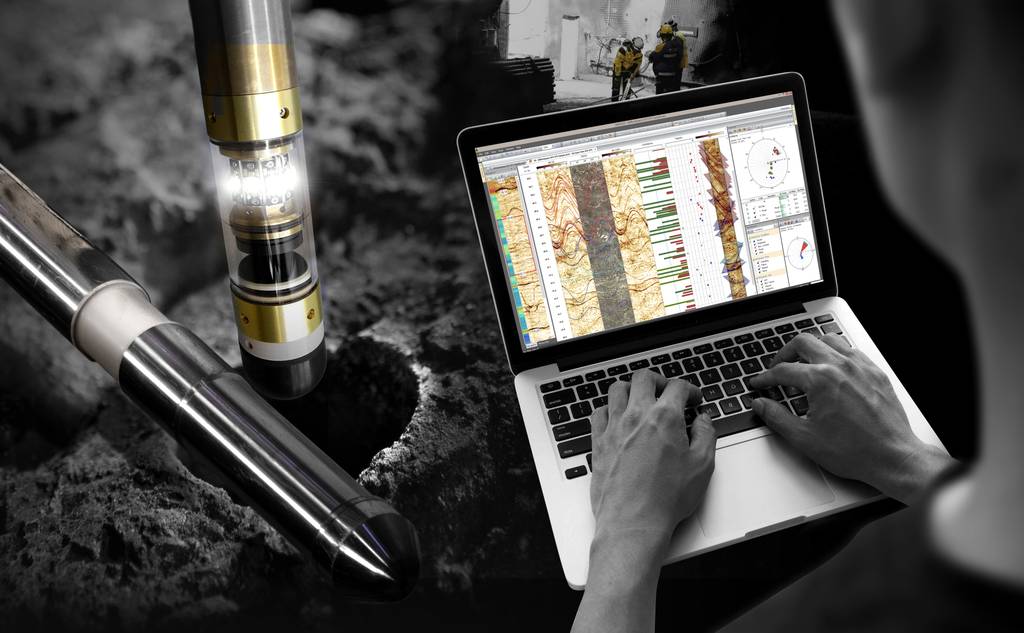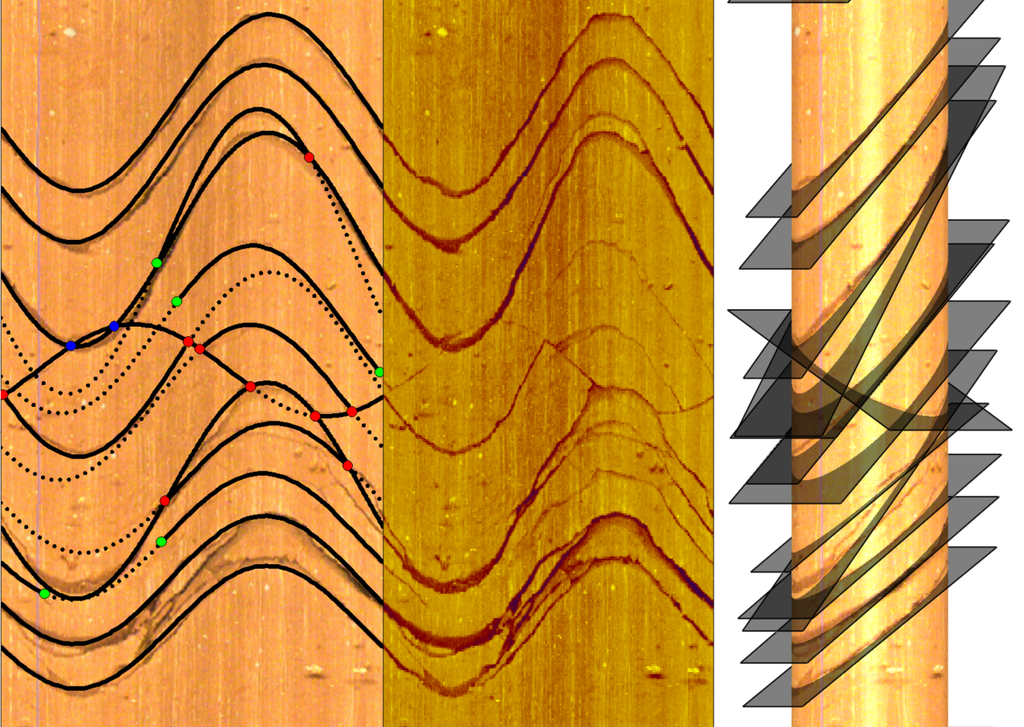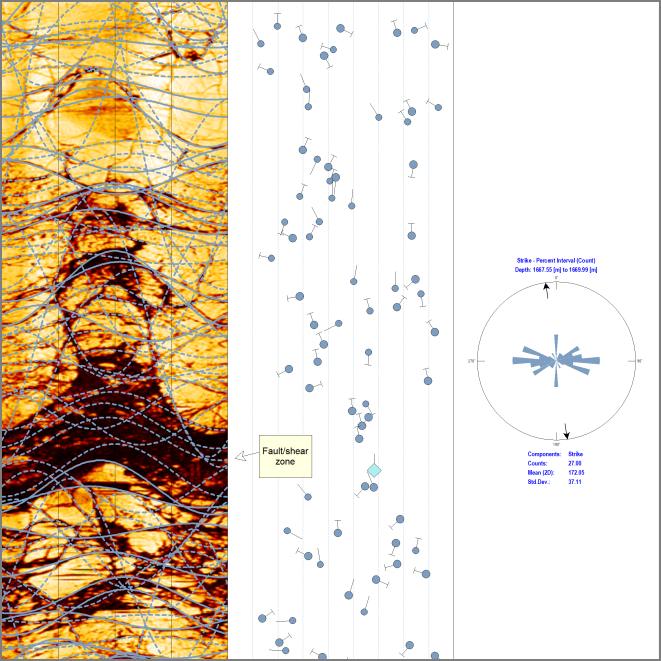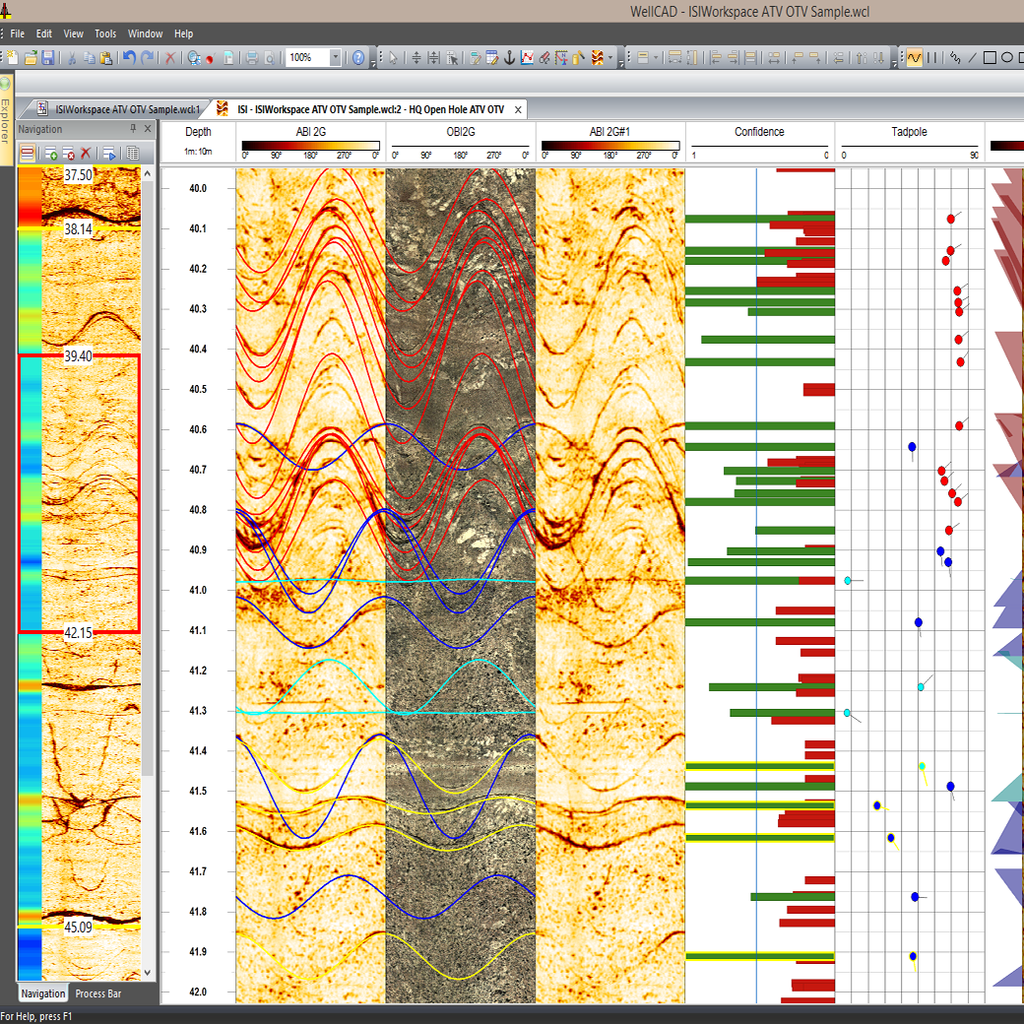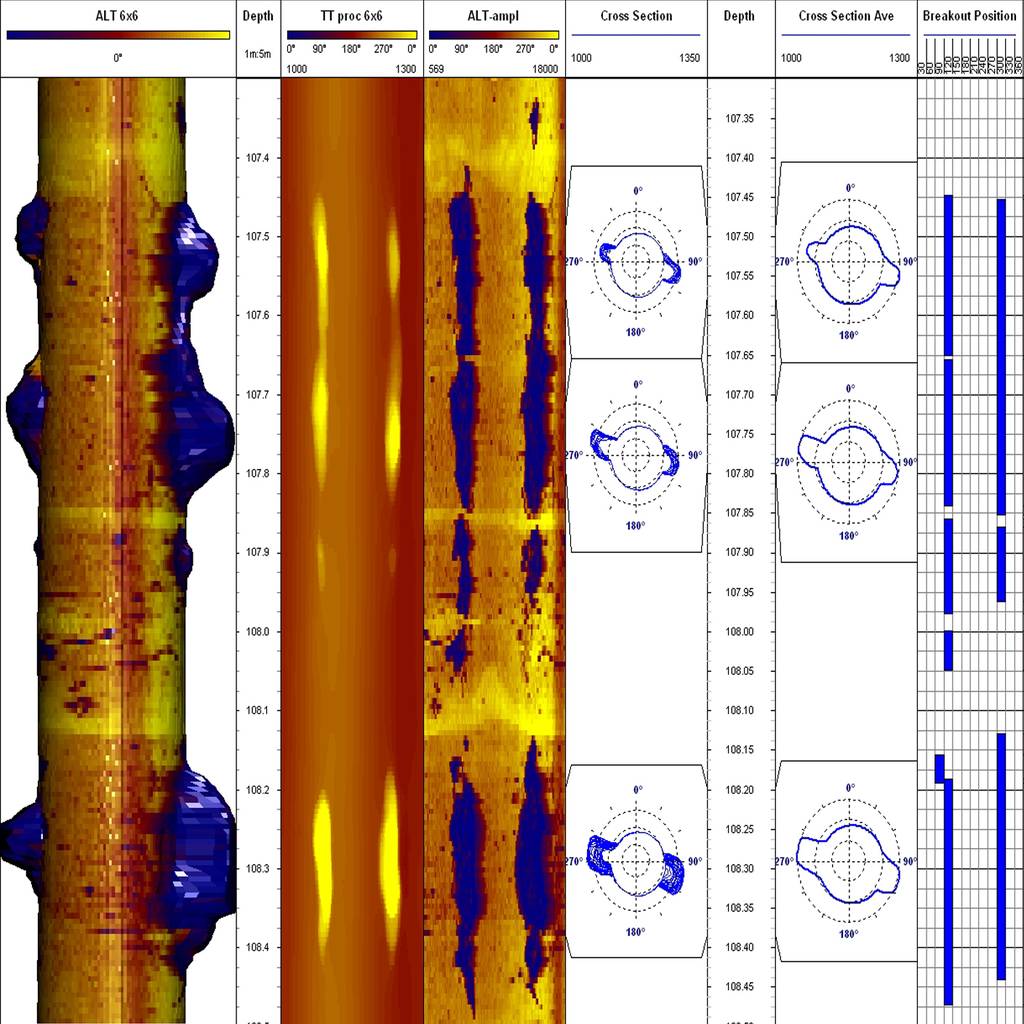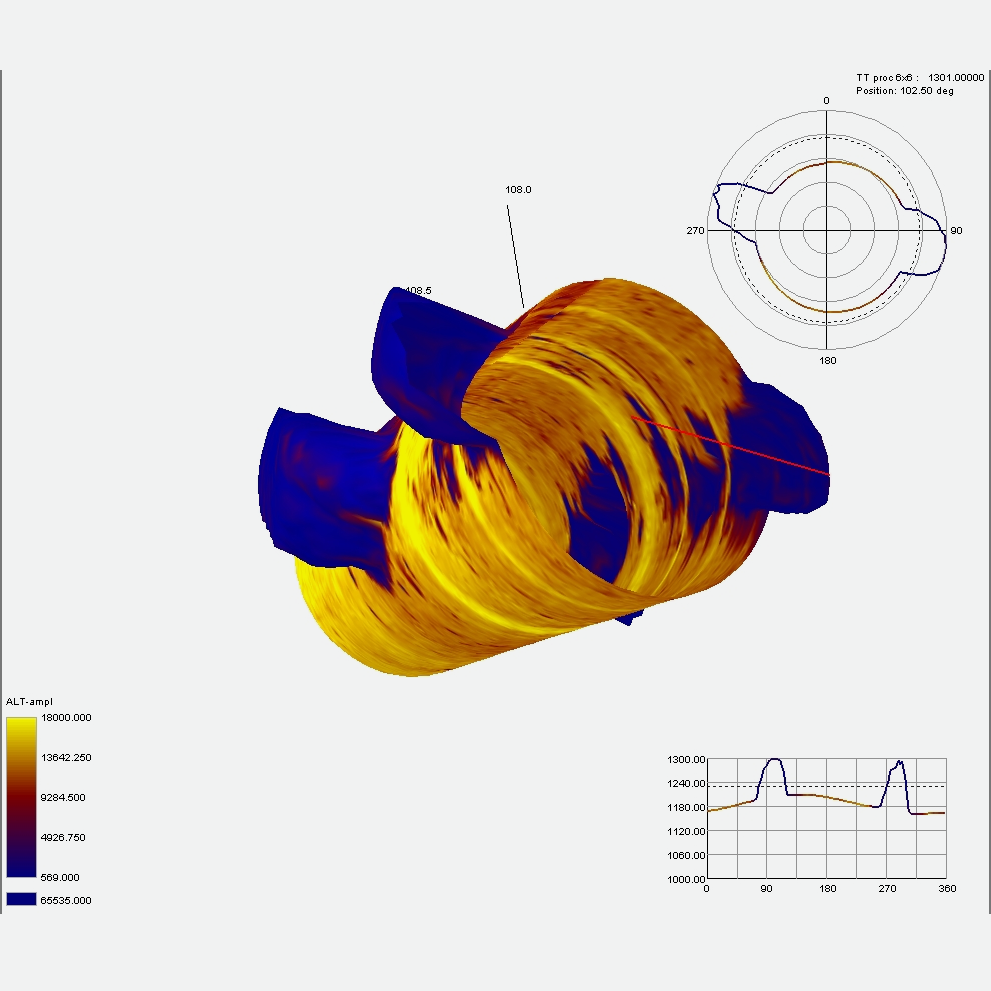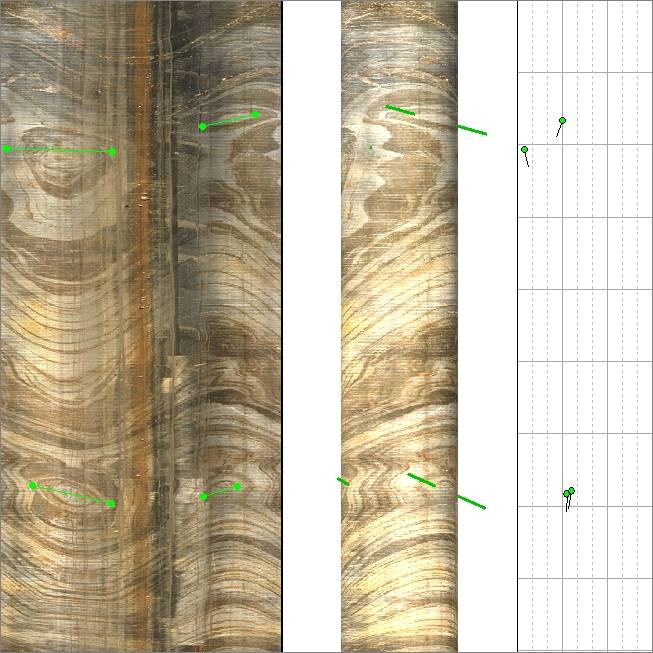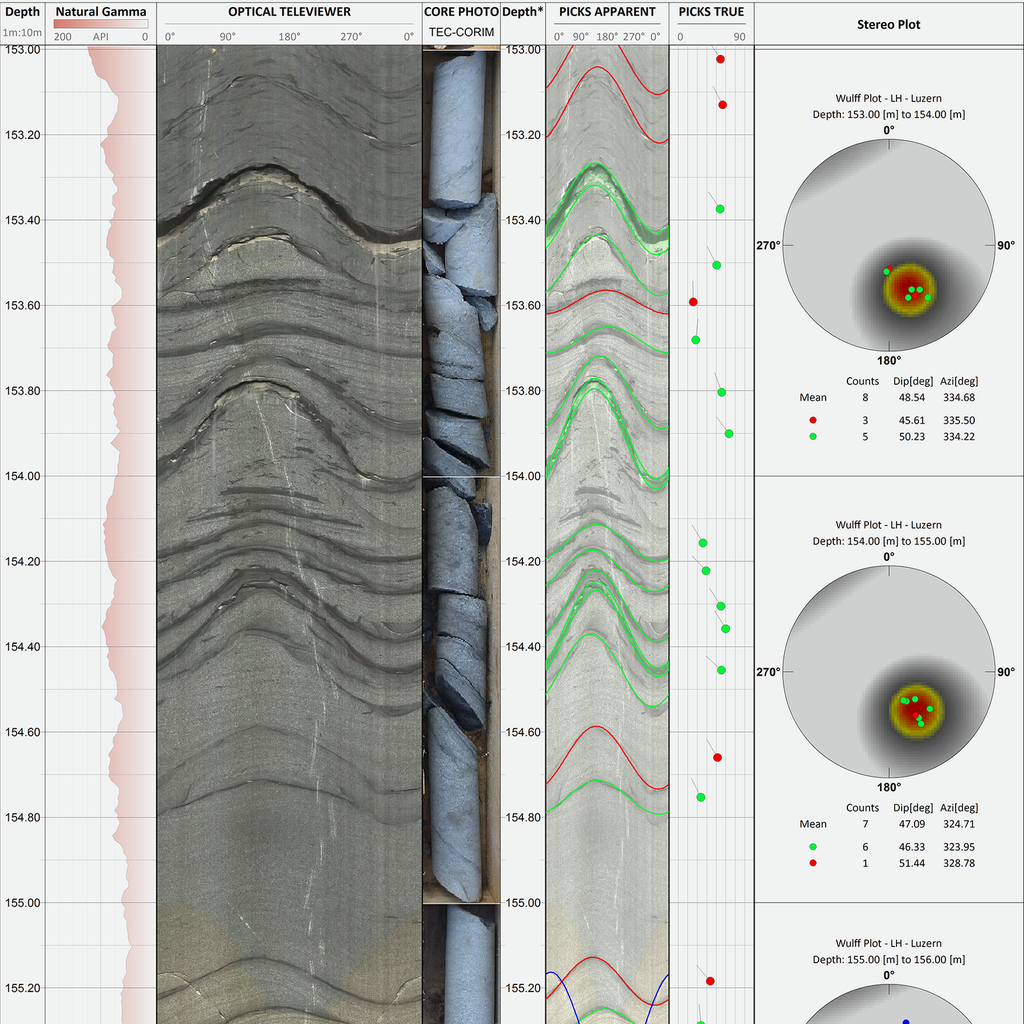The ISI module combines image pre-processing, manual and computer-assisted structure picking tools, classification, correction, and data presentation tools into a powerful interpretation platform.
WellCAD 5.8, introduces advanced fracture topology analysis, precise partial sinusoid picking, and enhanced visualization of fracture distributions to better understand networks affecting rock properties like strength and permeability.
- Supports data from acoustic, optical, electrical, deep reading imaging tools, and core/CT scans.
- Fully integrated workspace covering the entire dip picking workflow.
- Fully customizable dip classification schemes.
- Image log edition: depth shift, slice and merge, rotation, and mirror option for easy comparison with core scans.
- Image log processing: filter, bad trace correction, normalization, brightness & contrast, color classification and color component extraction.
- Multi-level color palette editor.
- Picking of planar (e.g., joints, faults, bedding), lineation (e.g. fold axes and mineral lineations), borehole parallel (e.g. breakouts and tensile fractures) and free-hand features.
- Supports adding partial picks providing feature depth and visible azimuth ranges.
- Apparent to true azimuth and dip correction.
- Terzaghi correction.
- Auto-picking algorithm developed by the Centre of Exploration Targeting at the University of Western Australia.
- Residual dip analysis.
- Pick statistics, RQD, and fracture height determination.
- Interactive dips workspace providing polar, rose, vector and woodcock diagrams.
- Dedicated data containers to include polar, rose, walk-out, and other diagram types in composite plots.
- 3D Virtual Reality Borehole Functionality: combines radius and borehole wall information into a virtual borehole.
- Optional FMS/FMI Wizard converts data blocks into oriented “stripe” images.
- Core Image Cropper isolates, registers depth, and merges core pictures from core box photographs.
- Core Shifter workspace iteratively depth shifts core intervals and reorients core scans and picks.
CLOSE
1 of 20
